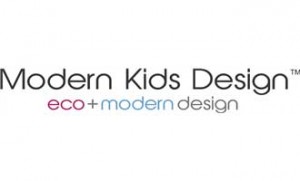
The Nutritious Rainbow — Eat Your Colors!
At Modern Kids Design, we’re passionate about a lot of things: kids, the environment, sustainability, food and we also love color—and not just in design. We love the vibrant reds and pinks of strawberries and pomegranates, the yellows of squash and lemon, the greens of… well, you get the idea. We are so lucky to have many different types of food to choose from. In fact, sometimes it’s even hard to decide how to fill our plates! While there is plenty of nutrition and diet advice out there that covers the spectrum, one thing almost everyone agrees on is that is a good idea to try to eat your colors. And it’s a fun way to introduce the concept and importance of balanced nutrition to kids.
Why Eating Your Colors is Important
Foods of different colors carry different nutrients. It’s important to get all these nutrients in our diet—and in our kids’ diets. By focusing on having foods of various colors, you’re ensuring that you’re giving your body all the different things it needs. Plus, it makes your plate look good. 🙂
Getting Started With a Food Rainbow
In order to start eating your colors, it’s helpful to know what nutrients come from which colors. Here’s an easy key to keep handy.
Red
Foods: Strawberries, tomatoes, peppers, watermelon
Nutrients: Lycopene, Vitamins A & C
Benefits: Great for good heart health and healthy skin and eyes
Orange
Foods: Carrots, peaches, sweet potatoes, oranges, peppers, pumpkins, and more
Nutrients: Beta-carotene, Vitamins A & C
Benefits: Immune-boosting, good for eyes and skin
Yellow
Foods: Bananas, pineapples, peppers, lemons, corn, squashes
Nutrients: Beta-carotene, antioxidants, Vitamin C
Benefits: Maintain healthy skin by strengthening collagen, reduce inflammation
Green
Foods: Broccoli, kale, spinach, cucumber, peas, limes, peppers, zucchinis, and more
Nutrients: Fiber, Vitamin K, Iron
Benefits: Supports the kidneys and liver, helps blood clot, good for hair and skin
Blue & Purple
Foods: Blueberries, grapes, beets, eggplants
Nutrients: Flavonoids, Vitamin K
Benefits: Brain boosting, raise “good” cholesterol
White
Foods: Onions, garlic, cauliflower
Nutrients: Sulfur, quercetin, and anthoxanthins
Benefits: Boost the immune system
Fun Food Ideas for Kids
Sometimes, getting kids to eat is all about presentation. Yes, you can cut up different varieties of food and place it into a bowl, and if you’re lucky, your child will dig in. If, on the other hand, you have a picky eater who is a bit reticent to try different things, it may be time to try playing with their food.
If you want to make it fun, consider taking inspiration from beautifully presented bento boxes (which can be wonderful for lunches by the way). Sometimes eggs are formed into bears, fruits are cut into smiles, and cheeses are cut into flowers. Using those same ideas, consider making fun platters that introduce some rainbow-hued snacks. For example, different types of melons and cantaloupes cut into squares and triangles can be presented as a rocket ship. Add some blueberry windows or sliced strawberry flames and you have a masterpiece that’s good enough to eat.
Another easy, delicious trick that allows for experimentation is blending a smoothie. Smoothies are easy to make and are a great way to customize your drink to get the different nutrients you want to give your kids (or yourself). Other simple tricks include stir-frys and salads.
Do you have any fun tips or tricks that help you get your family eating their colors? Let us know! And we always enjoy hearing from you at healthyliving@modernkidsdesign.com. Thanks for reading!




